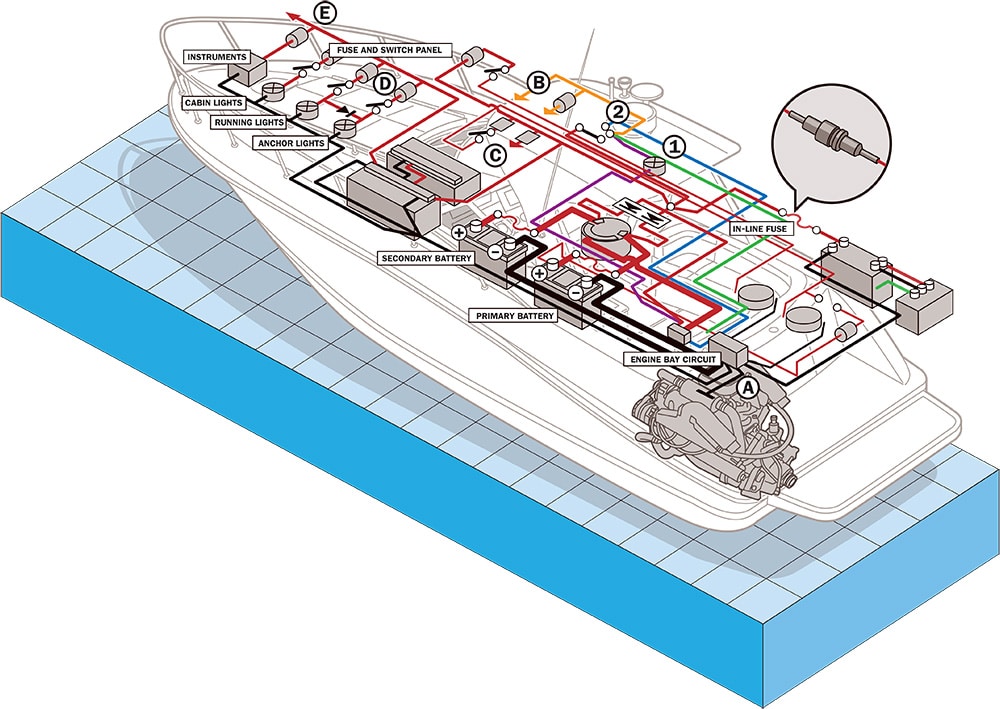
Boat Circuits Checklist
Boats make life hell for electrical circuits. The vibration, pounding, salty air, engine-space heat, exposure to chemicals and other rigors of the marine environment put a lot of pressure on the wires that are the central nervous system of any modern boat. In fact, more than half (55 percent) of fires investigated by BoatU.S. were found to have been caused by wiring and electrical problems (with wire chafing found as the most common problem). But we like electricity — a lot — so we take extra steps to ensure our circuits are safe and reliable. Follow these 10 industry-insider points to create your own dependable, well-protected circuits.
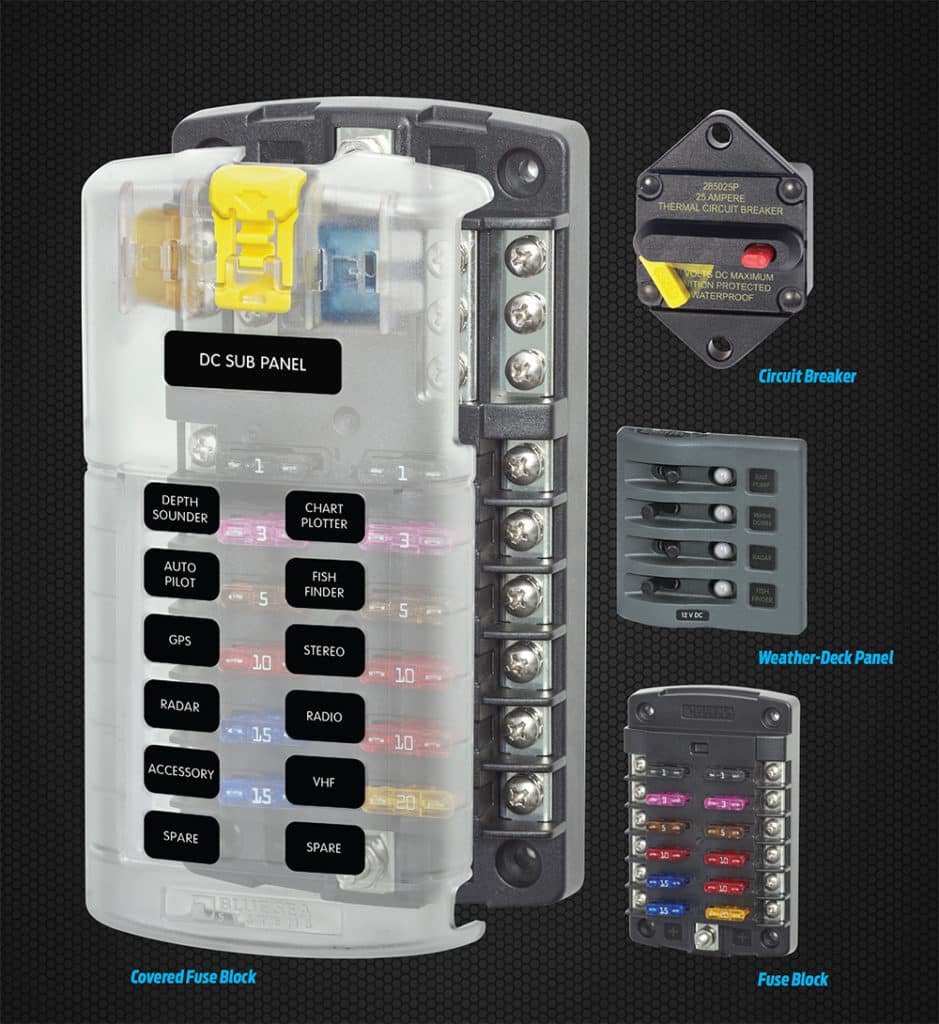
Boat Circuits Checklist
Protection, Please
For the most part, fuses and circuit breakers are there to protect your wires, not your equipment. A short circuit can expose a wire to hundreds of times more current than the wire can handle — instantly melting the insulation and starting a fire. An overload (like when too many appliances are plugged into the same circuit) can result in slightly more current than the circuit can safely handle. Fuses and circuit breakers should always be sized below the amp rating of the wires they are protecting. That will prevent short circuits and overloads, big or small, from exposing a wire to too much current.
Simply put, a fuse is a short length of wire or metal designed to melt and separate in the event of excessive current. Normally the fuse wire is encased in a clear sheath of plastic or glass so one can see when it has “blown,” and thus opened the circuit. Blade-type fuses and fusible links, as well as cartridge or “Bosch” fuses, can be found protecting boat electrical systems.
Circuit breakers are mostly thermally operated devices containing a bi-metallic strip that bends when subjected to excessive current. When the strip bends enough, the force created actuates the tripping mechanism. The breaker then trips and opens the circuit.

Boat Circuits Checklist
Chafe Hurts
Chafed insulation is a leading cause of boat fires. Vibration, hull flexing and moving components can quickly result in chafe, which can in turn result in wires being crossed, circuits shorting out and other dangers. Bulkhead penetrations, sharp corners and areas where wires come into contact with vibrating equipment (especially engines) are of particular concern. Rubber padding, grommets, conduit and even several wraps of electrical tape will help.
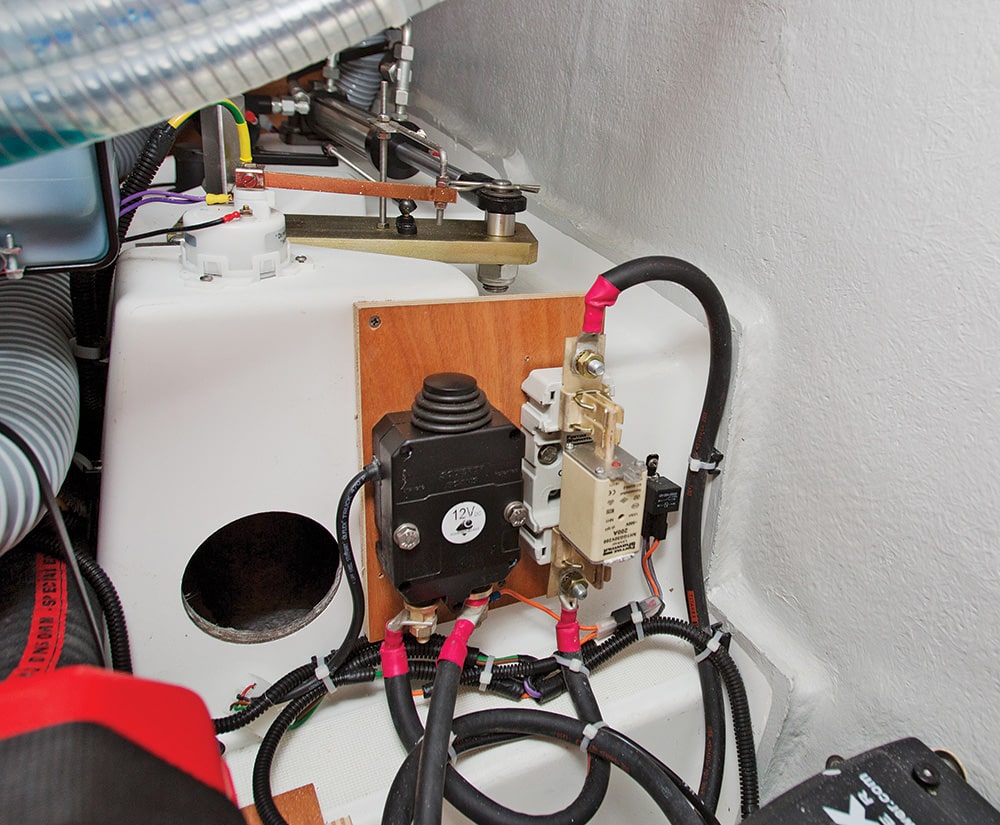
Boat Circuits Checklist
Boom!
Fuses, circuit breakers and other electrical components in areas where exposure to gasoline vapor or propane is possible must be marked “ignition protected.” Engine compartments on gasoline-powered boats and propane lockers are no-brainers. Diesel-powered boats with portable gasoline tanks stowed aboard for a dinghy also need this protection wherever the gasoline is stored. A fuse or circuit breaker that blows up your boat is not exactly ideal protection.
So just what does “ignition protected” mean? Conveniently, there is a definition written into U.S. Federal Law (CFR 183.410): Each electrical component must not ignite a propane gas and air mixture that is 4.25 to 5.25 percent propane gas by volume surrounding the electrical component when it is operated at each of its manufacturer rated voltages and current loadings, unless it is isolated from gasoline fuel sources, such as engines, and valves, connections, or other fittings in vent lines, fill lines, distribution lines or on fuel tanks, in accordance with paragraph (b) of this section.
An electrical component that is “ignition protected” is capable of operating in an explosive environment without igniting that environment. “Ignition protection” of electrical devices is accomplished by the use of seals, flame arrestors and potting (sealing), or a combination of such means.
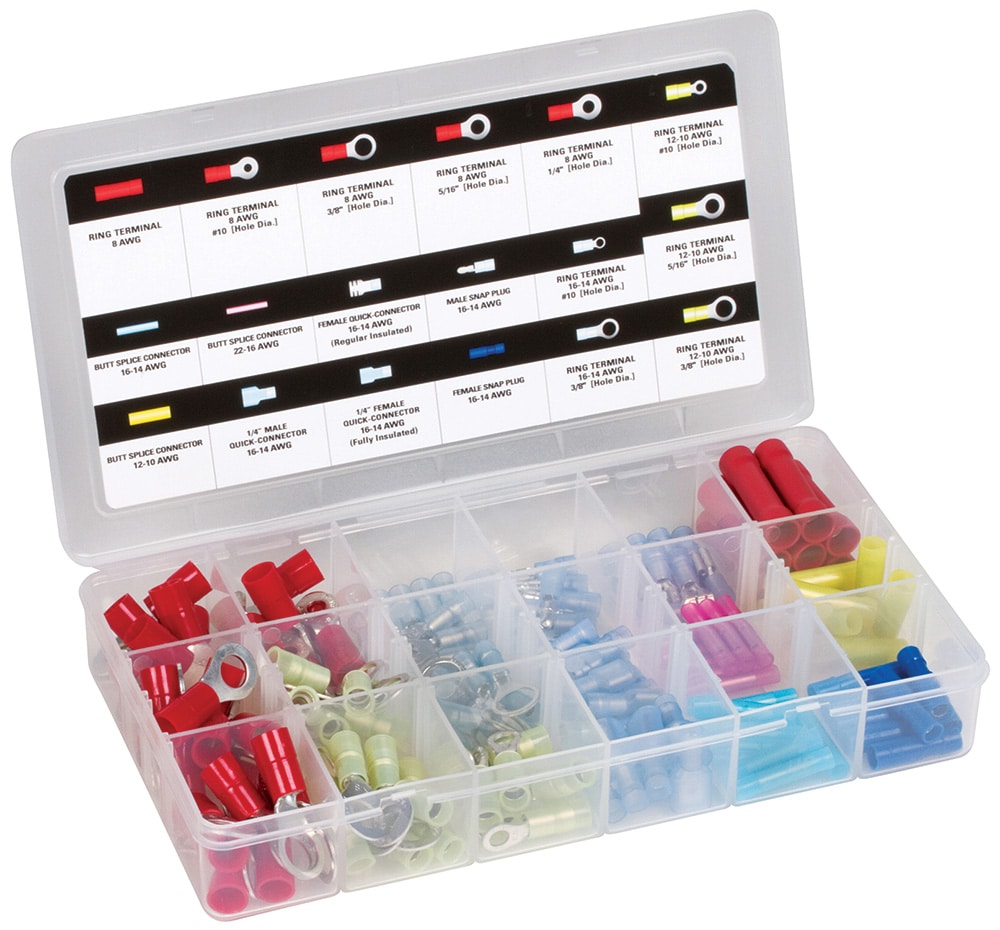
Boat Circuits Checklist
Connections Are Critical
Most electrical problems happen at the wire connections. Loose, corroded connections can cause localized hot spots that lead to poor performance and a possible fire hazard. Marine-grade ring or captive-spade terminals, adhesive-lined heat-shrink tubing and galvanically compatible materials are a must. No wire nuts — ever!
Get the Good Stuff
Look for this: “BC-5W2” and/or “Boat Cable.” The “BC” means Boat Cable, and the 5W2 refers to the quality of insulation — with 5W2 being the highest. This wire is a stranded, tinned-copper conductor with robust insulation — just what you need for marine service. Please, please, please — no household wire from Home Depot.
Safe Signs
A marine surveyor or electrician is required for a complete opinion, but you can look for these signs of safety and reliability.
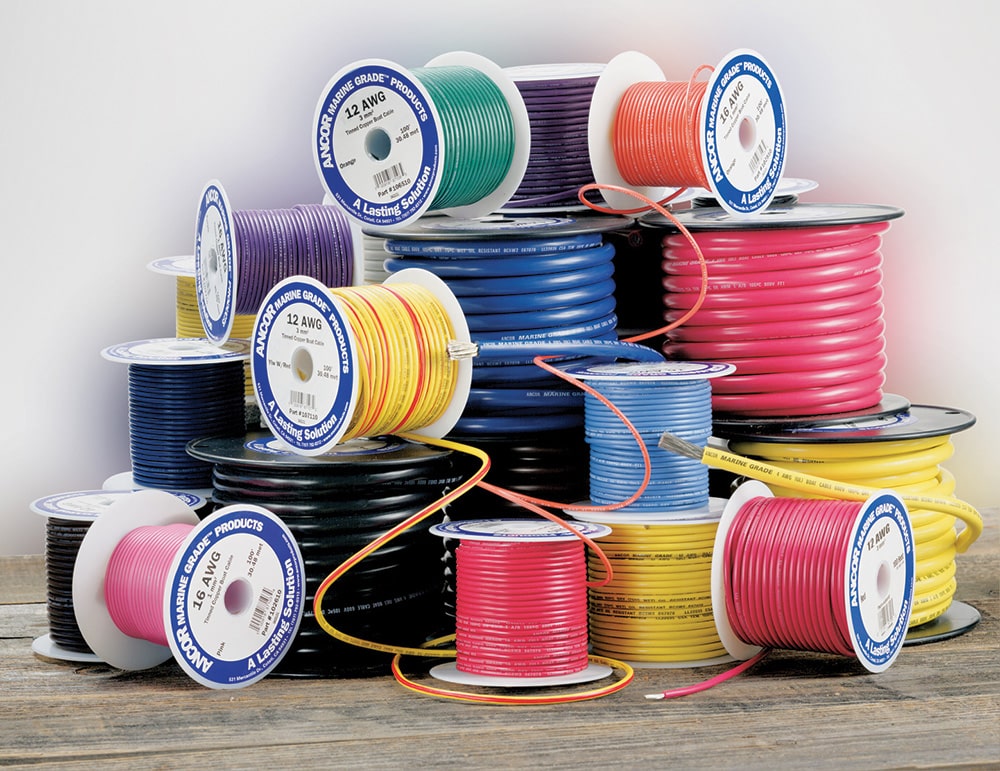
Boat Circuits Checklist
1. Labels
Seek “BC-5W2” and/or “Boat Cable.” The “BC” means Boat Cable, and the “5W2” refers to the quality of insulation.
2. Security
Wire and cable runs should be robustly secured to resist vibration, pounding, rolling and pitching.
3. Neatness
This counts because it makes troubleshooting, repairing and adding accessories much easier.
4. Terminals
ABYC allows up to four terminals to be stacked together; less is better, however.
5. Rings
Ring terminals are superior to fork terminals in reliability because they resist sliding out from a loose lug screw better.
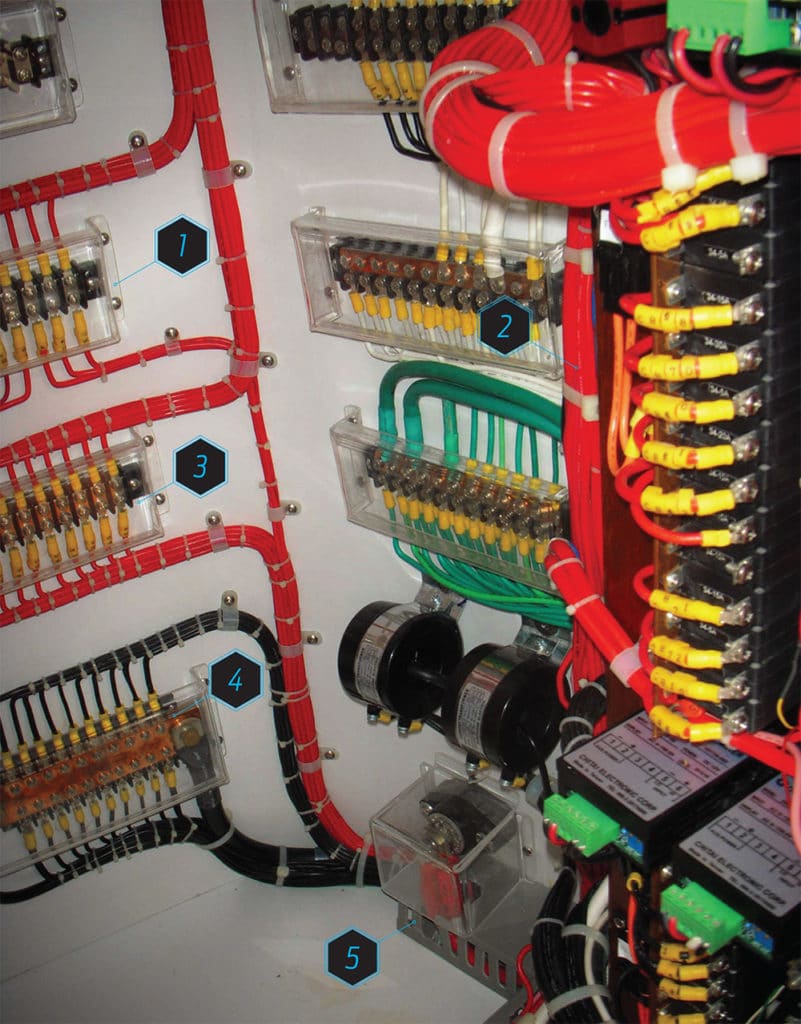
Boat Circuits Checklist
2. Security
3. Neatness
4. Terminals
5. Rings Boating Magazine
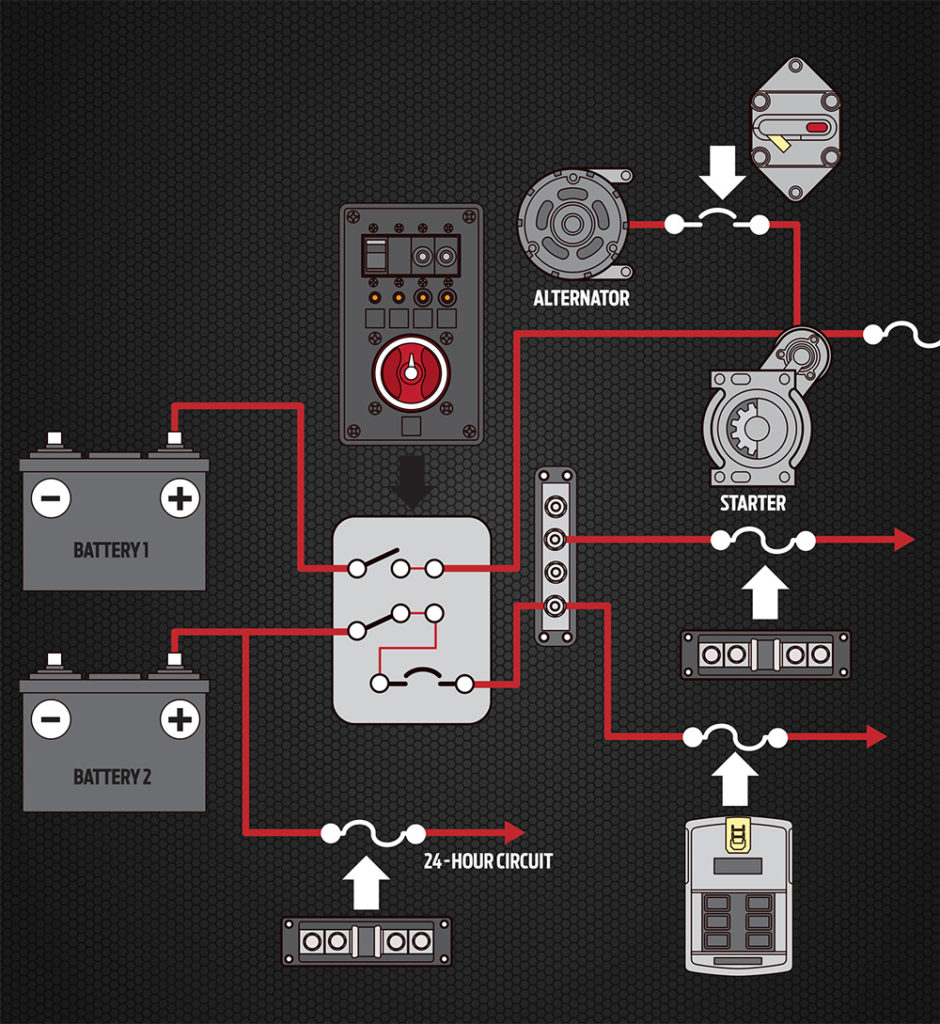
Boat Circuits Checklist
Here, Not There
Fuses and circuit breakers should be placed as close to the power source as practical (within 7 inches of wire length per the American Boat and Yacht Council). If you put the fuse next to the bilge pump instead of near the battery, the entire length of wire between the battery and fuse is not protected. If there is a short circuit before the fuse or circuit breaker, we want as little wire as possible to burn up.
Can 12-volt electrical equipment really start a fire aboard your boat? Though many boaters think of direct current (DC) electricity, like a boat’s 12-volt system, as “safe” compared with 110- or 240-volt alternating current (AC), 12-volt can create a fire, particularly if the circuit protection (the fuse or circuit breaker) is undersize or installed improperly — as in the wrong location.
Even with properly sized, properly installed circuit protection, an overcurrent situation can develop. For instance, using undersize wire between the fuse and the device could lead to misplaced confidence in having protection. However, an undersize conductor could be heated beyond its temperature rating without activating the circuit protection. Proper fuse and breaker placement is part of a larger system, the parts of which must all work in concert. Call in a pro whenever you are in doubt.
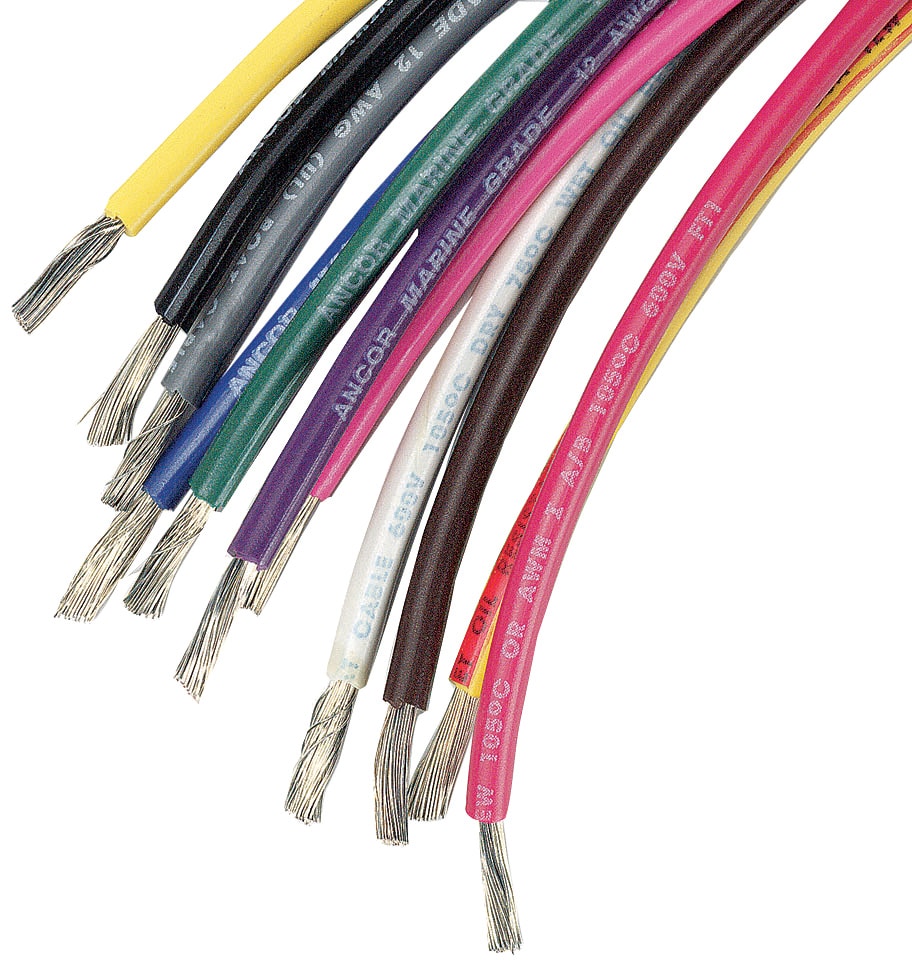
Boat Circuits Checklist
Size Matters
You need more copper for more current, especially for 12-volt and 24-volt circuits. If you push 30 amps through a skinny wire rated for only 15 amps, it can get hot enough to melt the insulation and cause all kinds of catastrophes. Most equipment installation instructions spell out required wire sizes — be sure to understand and follow closely. Professionals use complicated sizing charts published by the American Boat and Yacht Council. If in doubt, hire a pro.
For instance, your new electric cockpit lights may well come with installation instructions that specify a wire size at a certain voltage. But you’d still need to know, as would a certified marine electrician, whether, because of the length of the wire run between the power source and the lights, a voltage drop would occur. As the length of the wire run increases, resistance increases. With an increase in resistance comes, among other things, a drop in voltage. Larger wire than the directions state may be required to alleviate the problem. The installation must be built safely around such facts.
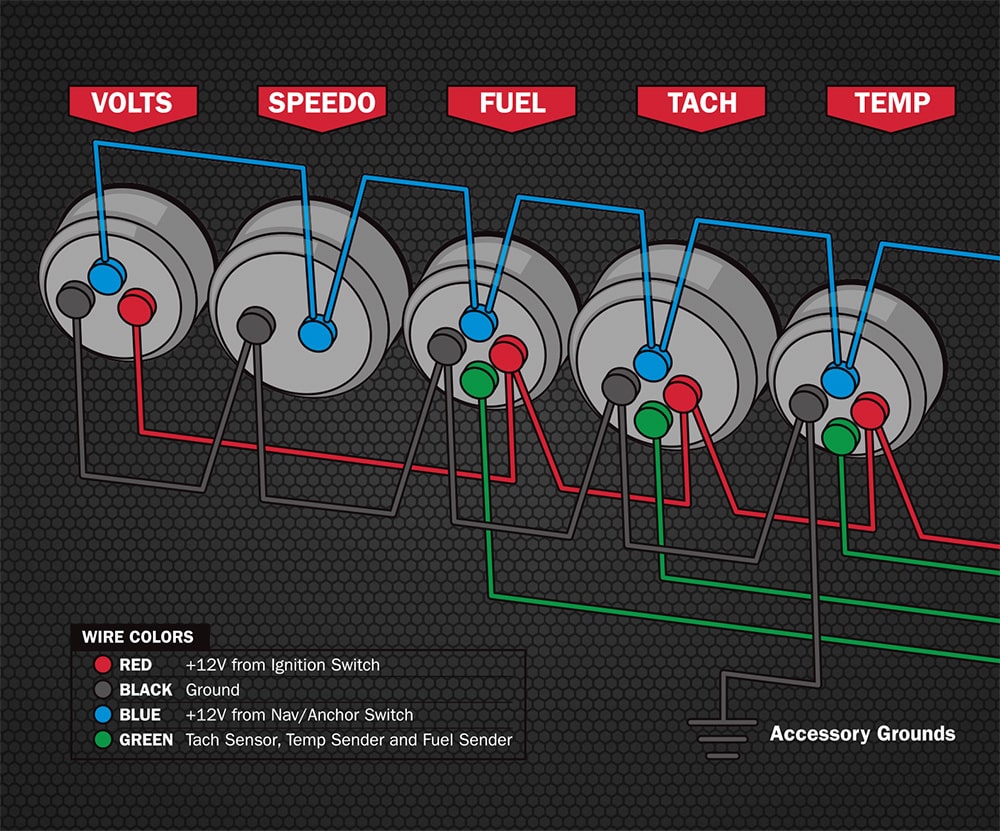
Boat Circuits Checklist
Red, Black, White?
Most high-quality boats come with a comprehensive owner’s manual. This should include a schematic indicating the wire colors used in building the multitude of circuits that power the equipment installed aboard your boat. Typically, this schematic will have a wire color scheme for positive, negative, ground, hot and neutral on each and every accessory and circuit aboard. This makes troubleshooting, maintenance, and accessory repair and replacement much easier.
Most times, you can count on boatbuilders using the “conventional” colors recommended by the ABYC, such as blue for cabin lights, pink for fuel gauges and brown with yellow for bilge blowers. If you are retrofitting or making a repair and find yourself without the right color wire on hand, don’t do your own thing here. The next person working on your boat might get zapped — or worse — not realizing you decided to use white for neutral and hot for that new pump. Also, it’s a very good idea to tag the wire on any new electrical installation with an ID label for ready reference. Another tip you’ll find useful is to create a quick sketch for your files.

Boat Circuits Checklist
Well Supported
A tidy electrical installation with wires supported by clamps every 18 inches is ideal to prevent strain on electrical connections. (Metal clamps with rubber cushions — often referred to as Adel clamps — are best over engines and machinery.) Strain can cause connections to become loose or separated, resulting in poor performance, equipment failure or a hazardous condition. Think of all the rocking, rolling, pounding and pitching even a good-riding boat endures during just one season, and it’s easy to see why wiring support is so critical.
Also, a good marine wiring practice is to route wires as far away as possible from exhaust pipes and other heat sources. Another good idea is to include drip loops. As the illustration shows, drip loops prevent condensation and moisture from running down a wire onto connections.
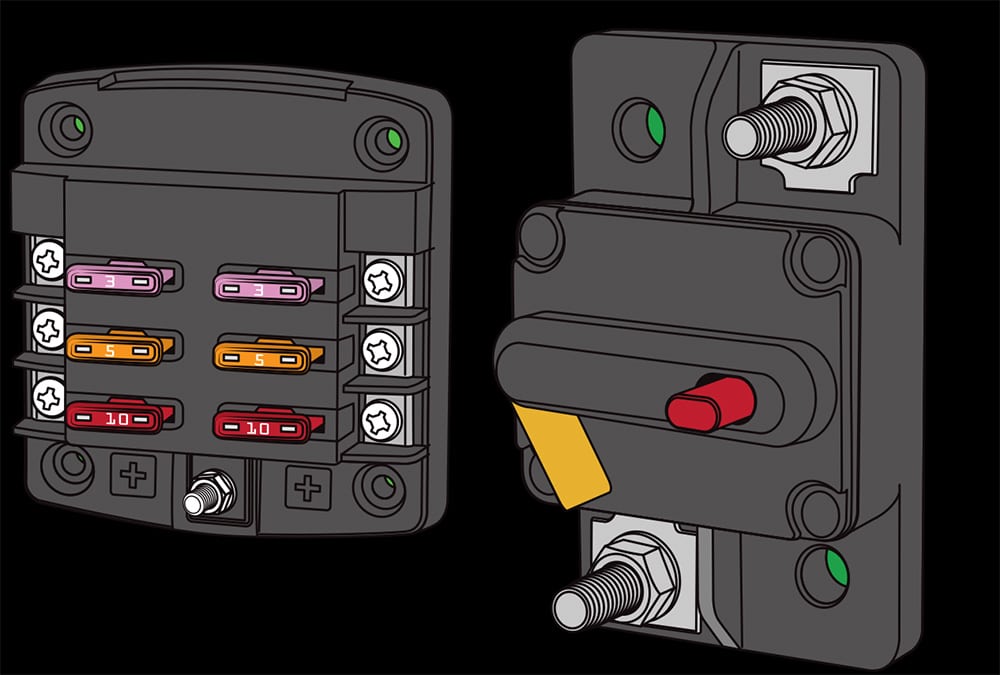
Boat Circuits Checklist
Fuses or Breakers?
Fuses sacrifice themselves for the greater good by melting (or “blowing”). Circuit breakers spring into action to open (or “break”) a circuit. So, when do you use which?
“I think AC systems should always be protected by circuit breakers,” says Wayne Kelsoe, chief technology officer for Blue Sea Systems, which makes circuit protection devices for recreational boats. “In DC systems, amperage ratings may make the decision for us at the high end, favoring fuses for main battery circuits.”
Replacing an AC fuse invites danger because you have to get in there near potentially lethal AC wires. A breaker removes this danger by providing an exposed reset switch that is safe to touch. Breakers are also often used for DC circuits to provide the on/off operation and to prevent folks from replacing a blown fuse with an inappropriate replacement (many fuses look the same and have the same physical dimensions, so it would be easy to accidentally replace a blown 1-amp fuse with a new 10-amp fuse and create a fire hazard). If installing a new circuit with a fuse, it’s a good idea to include a label indicating the fuse rating — and to make sure you have a few matching spares.
Fuses
Pros
– Relatively inexpensive
– Don’t wear out
– Easy to install in tight areas
– Wide range of ratings available
Cons
– Easy to accidentally use wrong fuse
– Have to keep spares
– Can be hard to see a blown fuse
– Can be difficult to change out
Breakers
Pros
– Safer choice for AC circuits
– Can use as an on/off switch
– Reset instead of replace
– Easy to see a tripped breaker
Cons
– Pricey (especially for high amps)
– Have to be hard-mounted (often in an enclosure)
– Limited range of ratings
– Should be tested and maintained
Become a Know-It-All
The points above just scratch the surface on providing safe, reliable electrical circuit installations. To further your knowledge and understanding, spend a few hours on the Technical Briefs section of the Blue Sea Systems website (bluesea.com). Visiting this website will make you much smarter than the average boater.
We also heartily endorse a read of Nigel Calder’s Boatowner’s Mechanical and Electrical Manual ($48.99, westmarine.com). This 832-page book is now in its third edition. Available in hard-cover and also in electronic-book formats, it will elevate you to near-know-it-all status (if you study it!). And taking ABYC’s electrical training courses will allow you to talk with any marine electrician out there (abycinc.org, 410-990-4460).








